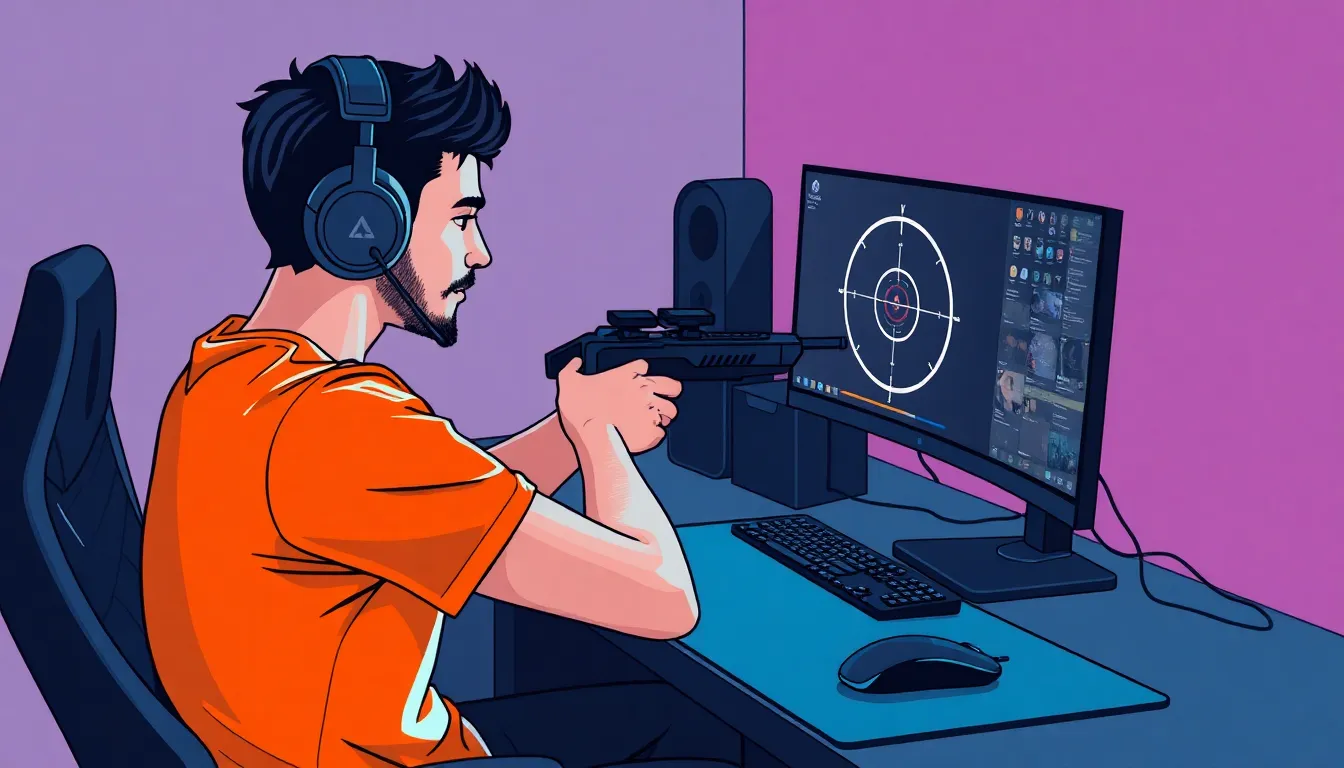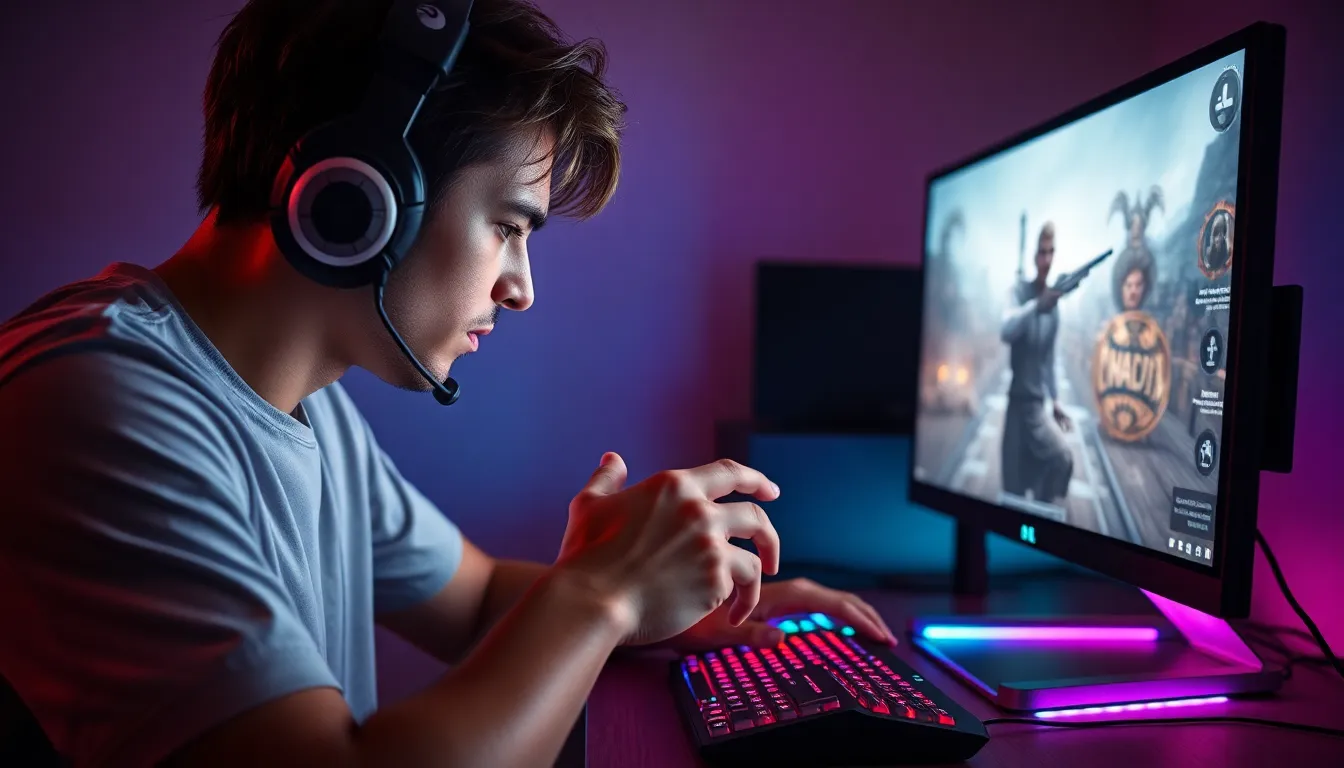In the world of gaming, there’s nothing quite like the thrill of landing that perfect shot. But let’s face it—sometimes it feels like aiming is more of a guessing game than a skill. If they’ve ever watched their crosshair dance around like it’s auditioning for a dance-off, they know exactly what we’re talking about. Fortunately, getting better aim isn’t just a pipe dream; it’s a skill that can be honed with the right techniques and a sprinkle of patience.
Imagine turning those wild shots into headshots and watching your opponents crumble in disbelief. With a few simple adjustments, they can elevate their game from “oops, did I just shoot the wall?” to “wow, how did they do that?” Whether they’re a seasoned pro or a casual gamer, this guide will unlock the secrets to precision aiming and help them dominate the battlefield like never before.
How To Get Better Aim
Aim serves as a core skill in gaming, directly impacting performance and gameplay enjoyment. Mastering aim requires understanding its fundamentals and applying effective techniques.
Importance of Good Aim
Good aim significantly enhances a player’s effectiveness in combat, leading to improved kill rates and overall success. It builds confidence during intense gameplay situations, allowing players to react swiftly. Accurate aim often differentiates between winning and losing, as precise shots can secure pivotal victories. Players equipped with strong aiming skills tend to progress faster in competitive scenarios. Ultimately, good aim contributes to a more rewarding gaming experience.
Types of Aim Techniques
Several aim techniques exist, each catering to different play styles and preferences. Flick shots involve quick, precise movements to hit targets, making them essential in fast-paced games. Tracking requires players to follow moving targets, relying on consistent adjustments and focus. Predicted shots target where opponents will be, timing shots to ensure accuracy. Aiming can further be influenced by sensitivity settings, with lower sensitivity allowing for finer adjustments. Experimenting with these techniques helps players discover which methods enhance their skill most effectively.
Practicing Your Aim

Practicing aim consistently leads to significant improvements in accuracy. Gamers can adopt specific routines to refine their skills effectively.
Setting Up a Training Routine
To build a solid training routine, start by allocating regular practice sessions. Choose a dedicated time each day for focused aiming drills. Incorporate a variety of exercises that target different skills, like flick shots and tracking. Logging progress helps identify strengths and weaknesses, making adjustments easier. Mixing intensity levels keeps practice engaging and challenging, maximizing development.
Using Aim Trainers
Aim trainers offer targeted practice environments designed for skill enhancement. Numerous online aim trainers simulate shooting scenarios, allowing players to practice in realistic settings. They track performance metrics, including accuracy and reaction time, providing valuable feedback. Additionally, aim trainers allow customization options, enabling users to tailor exercises to their needs. Regular use of these tools leads to better muscle memory and improved reflexes, translating to better performance in actual gameplay.
Game Sensitivity Settings
Game sensitivity settings play an essential role in achieving precision aiming. Adjusting these settings helps players develop their skills effectively.
Finding Your Optimal Sensitivity
Finding the right sensitivity setting enhances aim responsiveness. Start by adjusting in small increments. Players often find a value between 400 to 800 DPI provides good control. Testing various sensitivity settings during practice sessions is crucial. Evaluate performance within different scenarios to identify what feels comfortable. A lower sensitivity often benefits tracking, while a higher sensitivity might aid in flick shots. These adjustments help create a more tailored gameplay experience.
Adjusting Mouse Acceleration
Adjusting mouse acceleration affects how cursor movement corresponds to hand movement. Disabling mouse acceleration can lead to finer control over aim. Many players prefer a one-to-one ratio between hand movement and on-screen movement. Ensuring consistency leads to improved muscle memory over time. Acceleration complicates aiming when players react instinctively. Evaluating the adjustment in practice sessions provides clarity. Consistent usage promotes better aim and enhances overall gameplay effectiveness.
Improving Hand-Eye Coordination
Enhancing hand-eye coordination significantly boosts aiming skills. This process requires consistent practice and specific exercises.
Exercises for Better Coordination
Incorporate target shooting exercises with a focus on precision. Players can use a stationary or moving target to train their reflexes. Practicing with different sizes of targets sharpens focus. Introducing games like “Toss and Catch” helps players adjust to visual cues. Simultaneously juggling can develop coordination, as it demands precise hand movements. Regularly performing these exercises strengthens muscle memory, leading to better aim.
Tips for Focus and Concentration
Minimize distractions during practice sessions for improved focus. Create a dedicated gaming space that promotes concentration. Using noise-canceling headphones can help block out external sounds. Players should set clear goals for each session to maintain motivation. Implementing short, timed drills ensures structured practice and keeps attention sharp. Taking breaks is essential; these pauses refresh focus and prevent burnout. Staying hydrated contributes to better cognitive function and helps sustain concentration levels.
Analyzing Your Gameplay
Analyzing gameplay can significantly enhance aiming skills. Two crucial aspects of this analysis include reviewing game clips and learning from mistakes.
Reviewing Game Clips
Reviewing game clips helps identify recurring aiming issues. Players can observe their performance in various situations, focusing on shot accuracy. Analyzing the decisions made during key moments reveals patterns in aiming behavior. It’s beneficial to note environmental factors affecting aim, like positioning and enemy movement. Furthermore, comparing clips with higher accuracy can provide insights into effective strategies. Identifying differences between successful and unsuccessful attempts offers valuable lessons. Overall, this analysis fosters a deeper understanding of personal gameplay tendencies.
Learning from Mistakes
Learning from mistakes strengthens aiming abilities. A player should reflect on missed shots to uncover underlying causes. Pinpointing the moments when the aim faltered creates opportunities for improvement. Discussions with teammates about aiming challenges often yield alternative perspectives and solutions. Keeping a journal detailing errors encountered during gameplay assists in recognizing frequent mistakes. Additionally, focusing on specific skills can lead to targeted practice sessions. Engaging in constructive self-critique promotes continuous growth and development in aiming precision.
Conclusion
Improving aim is a journey that requires dedication and the right approach. By implementing the techniques discussed and committing to consistent practice, gamers can significantly enhance their shooting accuracy.
Finding the right sensitivity settings and honing hand-eye coordination are essential steps toward mastery. Analyzing gameplay and learning from mistakes further solidifies progress.
With patience and persistence, anyone can transform their aim from erratic to precise, leading to a more enjoyable and successful gaming experience. Embrace the challenge and watch as skills improve over time.

